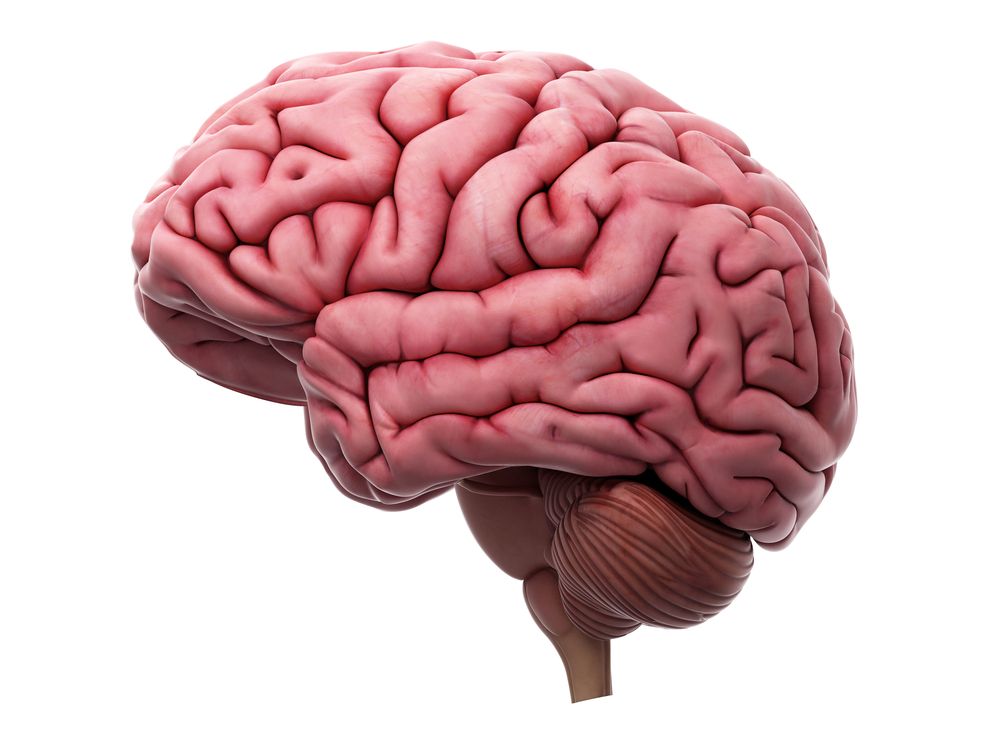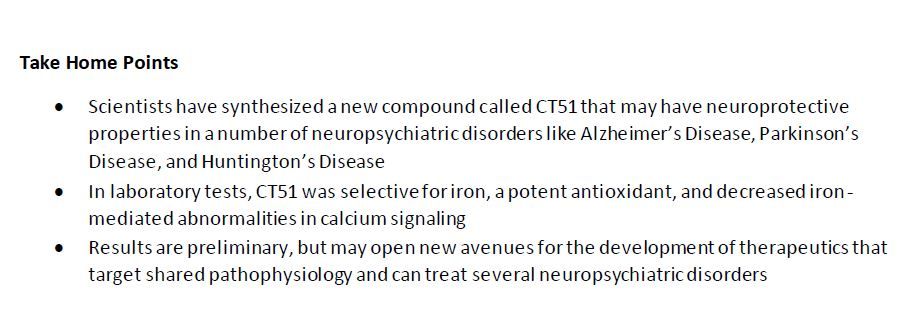Article
New Compound May Treat Several Neuropsychiatric Disorders
Author(s):
A newly synthesized compound may be the basis for a novel iron-chelation therapy in several iron-associated neurodegenerative disorders, including Alzheimer, Parkinson, and Huntington disease.
©SebastianKaulitzki/Shutterstock

Key Points

Scientists have synthesized a new compound called CT51, which selectively binds to iron and has neuroprotective properties. CT51 may have therapeutic value in a number of neuropsychiatric disorders, according to a new study.1
“[T]he results presented in this study may form the basis for the development of a novel iron-chelation therapy against iron-associated neurodegenerative disorders,” wrote first author Olimpo Garcia Beltran, PhD, of the University of Chile (Santiago, Chile), and colleagues.
Several neuropsychiatric diseases, including Alzheimer’s, Huntington's, and Parkinson's, show abnormalities in iron accumulation, oxidative stress, and calcium signaling. Iron, while essential to life, can also produce reactive oxygen species which can damage cells. In particular, the brain has higher iron requirements than other organs in the body, and optimal iron levels (neither too high nor too low) are essential for neuronal function.
However, in diseases like Alzheimer’s and Parkinson’s, brain iron content is increased, which can lead to abnormal calcium signaling and to neuronal damage. Some studies have suggested that iron chelation can decrease symptom progression in these conditions.2
In an attempt to develop a new iron chelation therapy, researchers synthesized CT51, and evaluated its properties in a series of laboratory experiments. Initial tests showed that CT51 is highly selective for Fe2+ and was potent at quenching free radicals.
Studies in human neuroblastoma cells designed to test for the neurotoxicity of new drugs showed that CT51 entered both the cytoplasm and the mitochondria, where it showed the potential to selectively sense iron and protect against oxidative damage.
Tests in rat hippocampal neurons showed that CT51 decreased iron-mediated abnormalities in calcium signaling.
While a therapy using CT51 may be a long way from the clinic, initial results from this study and others may open new avenues for the development of therapeutics that target shared pathophysiology, and have the potential to treat not just one, but several neuropsychiatric disorders.
References:
1. GarcÃa-Beltrán O, Mena NP, Aguirre P, et al. Development of an iron-selective antioxidant probe with protective effects on neuronal function. PLoS One. 2017;Dec 11;12(12):e0189043.
2. Dusek P, Schneider SA, Aaseth J, et al. Iron chelation in the treatment of neurodegenerative diseases.J Trace Elem Med Biol. 2016;38:81-92.





